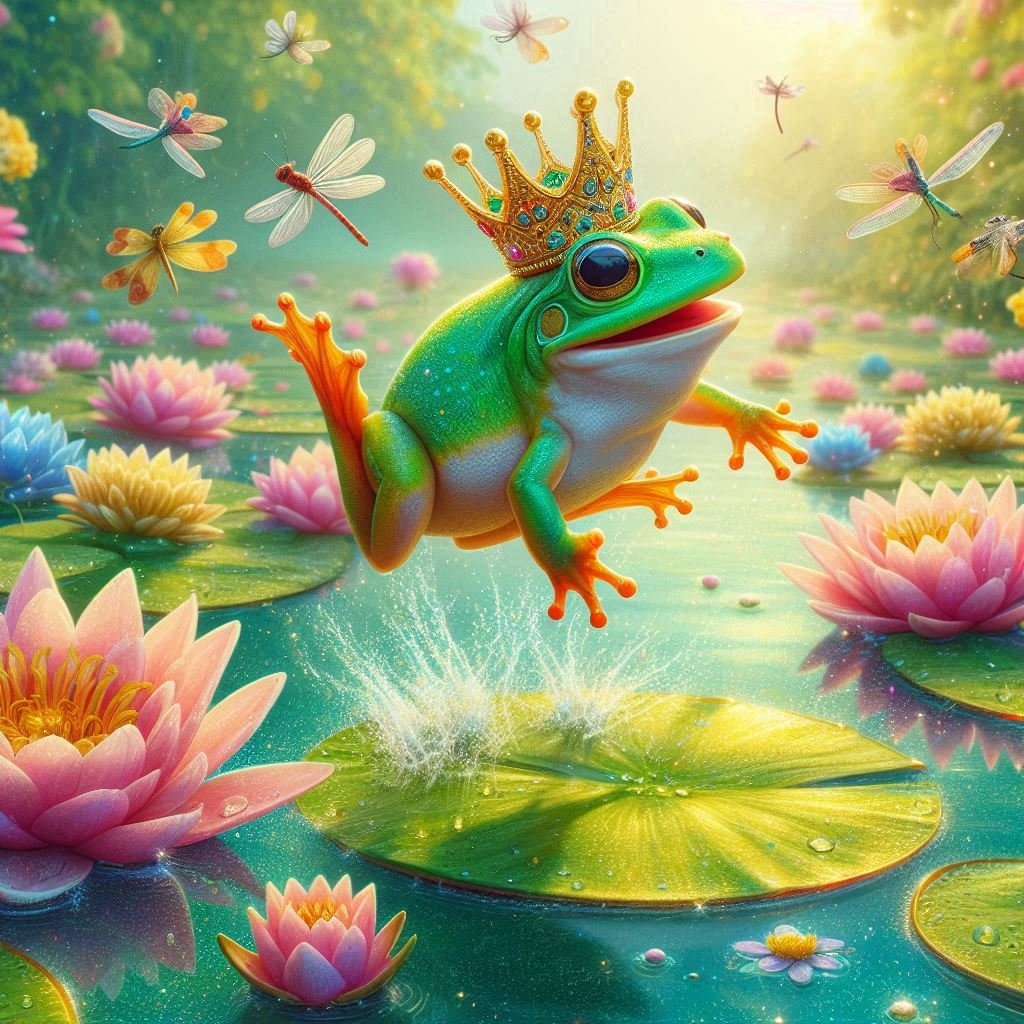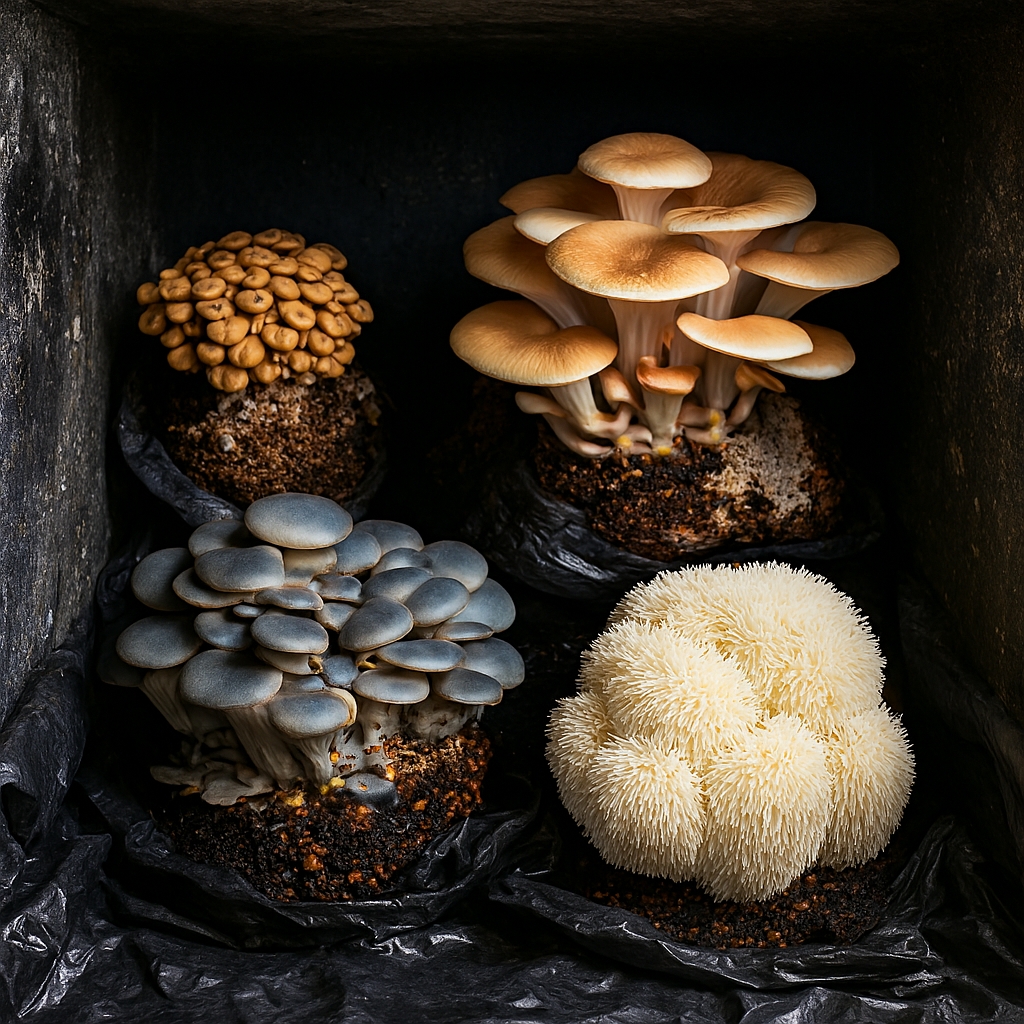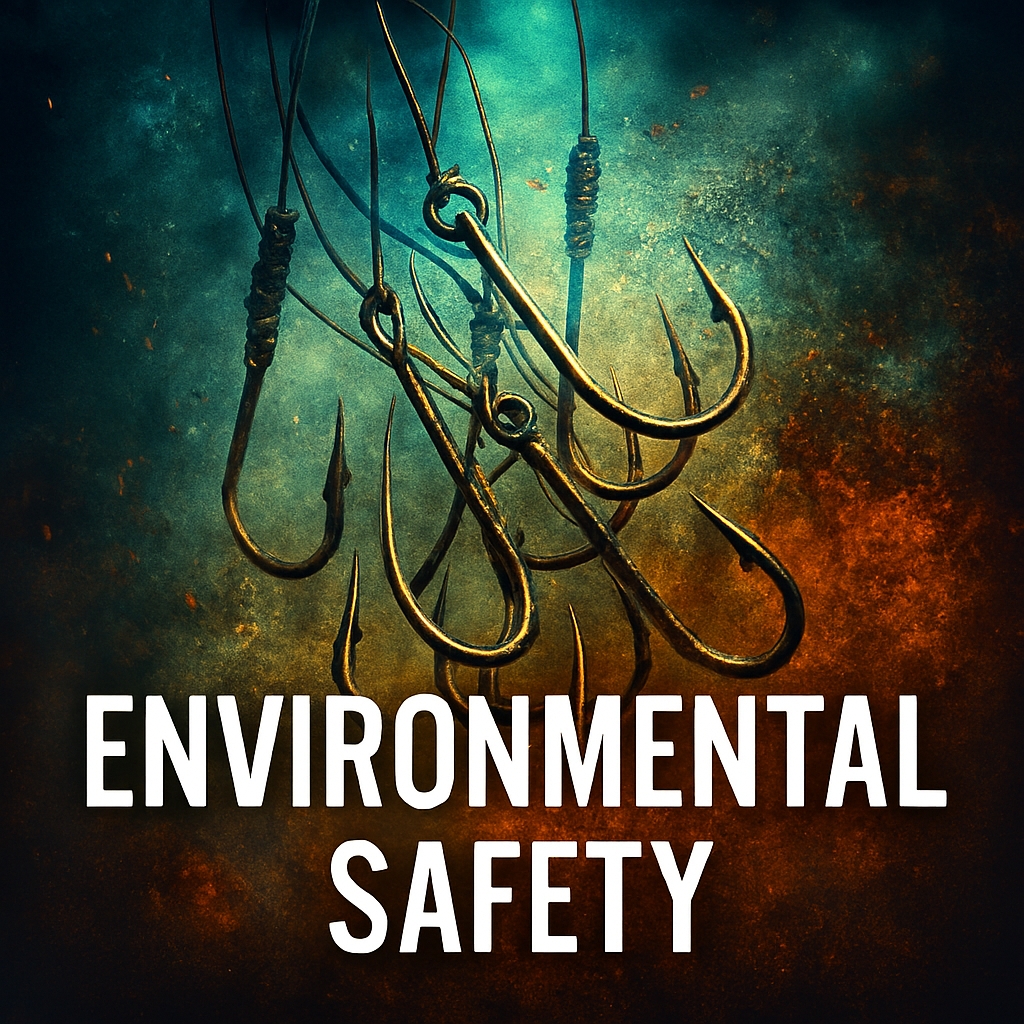Frogs, Tadpoles, and Newts The Unsung Architects of Ecosystems
Guardians of the Ecosystem
Frogs, tadpoles, and newts are nature’s understated heroes. These amphibians may be small, but their ecological roles are vast and vital. They influence population dynamics, regulate ecosystems, and act as indicators of environmental health. Through their lifecycle stages and unique behaviors, they weave themselves into the intricate fabric of the natural world, shaping the ecological structure of any area they inhabit.
EcoAllies
Champions of Environmental Change
EcoAllies are individuals, organizations, or even species that work collaboratively to protect and preserve the environment. Whether it’s through hands-on restoration projects, educational campaigns, or simply supporting biodiversity, EcoAllies play an indispensable role in fostering a sustainable future.
Amphibians, such as frogs, tadpoles, and newts, are perfect examples of natural EcoAllies. Their lifecycle actively contributes to ecosystem health, from controlling pests and algae to maintaining water quality in aquatic environments. Similarly, humans who advocate for amphibian conservation can be considered EcoAllies, working to safeguard their habitats and educate others about their ecological importance.
EcoAllies also extend to partnerships between groups—such as wildlife conservationists, climate scientists, and community leaders—who unite their efforts for greater environmental impact. By pooling resources, sharing knowledge, and tackling issues like habitat destruction and climate change, they amplify their positive influence on the planet.
Becoming an EcoAlly doesn’t require grand gestures—it starts with small actions like creating pollinator gardens, reducing single-use plastics, or joining local conservation groups. Every EcoAlly, no matter how big or small their role, contributes to a thriving Earth and an inspired movement toward sustainability.
EcoAllies remind us that collaboration across human, animal, and organizational boundaries is key to solving the world’s environmental challenges. Together, we can leap into action and build a better future for all.

The EcoAllies In Action
How Frogs, Tadpoles, and Newts Change the World
Amphibians like frogs, tadpoles, and newts might be small, but their impact on the planet is colossal. These fascinating creatures play pivotal roles in preserving ecosystems, maintaining biodiversity, and even fighting environmental challenges. Here’s how they change the world and how they represent the spirit of EcoAllies:
Balancing Ecosystems and Protecting Biodiversity
Amphibians are essential in maintaining the delicate balance of ecosystems. Tadpoles regulate algae growth, preventing harmful blooms that could suffocate aquatic life, while frogs and newts keep insect populations in check. By doing so, they protect biodiversity and create stable environments that benefit countless species. Their ability to act as both predator and prey makes them irreplaceable nodes in food webs across the globe.
As natural EcoAllies, amphibians ensure that ecosystems thrive by partnering with other species in a delicate and intricate balance. Every frog, tadpole, or newt acts as a vital piece of the environmental puzzle, contributing to the sustainability of life around them.

Natural Indicators of Environmental Health
Frogs, tadpoles, and newts are often referred to as “ecological barometers” because their presence signals a healthy environment. Their permeable skin makes them incredibly sensitive to changes in water quality, temperature, and pollution. When amphibians thrive, it means ecosystems are flourishing; when their numbers dwindle, it’s often a red flag of ecological stress. These creatures alert us to environmental dangers, driving action to repair and restore habitats.
EcoAllies, including researchers, conservationists, and local communities, rely on the insights provided by amphibians to monitor and restore ecosystems. By working together to address threats to amphibians, humans become EcoAllies, actively contributing to the planet’s health.
Shaping Wetlands and Waterways
As amphibians move through wetlands, ponds, and streams, they stir up sediment, aerate soil, and recycle nutrients. This natural engineering encourages plant growth, promotes better water quality, and strengthens aquatic ecosystems. Their role as ecosystem architects helps shape habitats that serve as homes for countless organisms. Wetlands, often described as Earth’s kidneys, rely on amphibians to perform essential ecological functions that benefit all lifeforms.
In this role, amphibians epitomize the concept of EcoAllies by actively building and nurturing environments. Their partnership with plants, microorganisms, and other animals creates a collaborative system that sustains life.

Battling Climate Change
Amphibians indirectly contribute to climate change mitigation. By controlling algae, they promote the growth of aquatic plants that absorb and store carbon dioxide. Healthy wetlands, shaped in part by amphibians, act as carbon sinks, storing greenhouse gases and slowing climate change. Their influence on vegetation and water systems underscores the interconnectedness of life in combating environmental challenges.
When humans take steps to conserve amphibians and restore their habitats, they join these creatures as EcoAllies in the fight against climate change. Every small action—from protecting wetlands to reducing pollution—works hand-in-hand with amphibians to safeguard the planet.
Contributing to Sustainable Agriculture
Amphibians support sustainable agriculture by preying on crop-destroying insects. Frogs and newts naturally reduce pest populations, lessening the need for harmful pesticides and promoting eco-friendly farming practices. Tadpoles also help improve water quality in irrigation systems, benefiting agriculture that relies on clean, sustainable water sources.
In this way, amphibians become allies to farmers and ecosystems alike. By viewing frogs, tadpoles, and newts as EcoAllies, we can foster farming practices that align with ecological health and sustainability.

Inspiring Conservation and Education
Amphibians change the world by inspiring environmental stewardship. Their captivating lifecycles—metamorphosis from egg to tadpole to adult—offer opportunities for education, teaching people of all ages about biodiversity and the importance of conservation. Frogs are also cultural symbols in myths and folklore worldwide, connecting people to nature and encouraging community-based efforts to protect these irreplaceable creatures.
By learning about amphibians and taking steps to protect them, people become EcoAllies in action. Whether through local conservation projects, educational programs, or simple backyard ponds, every effort helps amplify the positive impact of these remarkable creatures.
The Metamorphic Magic of Amphibians
Amphibians like frogs and newts undergo extraordinary metamorphoses, transitioning from water-bound eggs to aquatic larvae (tadpoles or newt larvae) and finally into land-and-water adults. Each stage plays a unique role in the ecosystem.
In their tadpole stage, they consume algae, preventing harmful blooms in aquatic systems. When they grow into adults, their predation on insects reduces pest populations. Newts, in particular, play dual roles, spending time both underwater and on land, influencing the dynamics of two environments. Their adaptive lifecycle makes them versatile contributors to biodiversity and ecological balance.

Population Regulators
Nature’s Pest Patrol
Adult frogs and newts have insatiable appetites for insects, spiders, and other invertebrates. Their hunting activities help control populations of mosquitoes, flies, and agricultural pests, reducing the spread of diseases and crop damage.
On the flip side, tadpoles manage algae and organic matter in freshwater systems. They feed on decaying plant material and algae, ensuring water bodies remain clean and rich in oxygen. Without these amphibians, pests could grow unchecked, and aquatic ecosystems could face nutrient imbalances.
Amphibians as Environmental Engineers
Tadpoles, frogs, and newts serve as inadvertent engineers of their habitats. Their movements stir up sediment in ponds and streams, which helps circulate nutrients, supporting plant growth and other aquatic organisms. Amphibians also burrow into soft soils, aerating the ground and promoting microbial activity—an essential process for healthy ecosystems.
Additionally, these creatures aid in seed dispersal. As they traverse land and water, they unintentionally carry plant material or seeds across habitats, contributing to vegetation diversity.
Ecosystem Stabilizers
Amphibians in the Food Web
Amphibians are central to food webs. Tadpoles are an important food source for fish, aquatic insects, and birds, while adult frogs and newts provide sustenance for snakes, mammals, and predatory birds.
Their presence creates a balance within the food web, ensuring energy flows efficiently through the ecosystem. A decline in amphibian populations could disrupt this delicate balance, affecting predators and prey alike.
Sensitive Indicators of Environmental Health
Frogs, newts, and their larvae are among the first species to respond to environmental changes. Their skin is permeable, making them highly sensitive to water quality, temperature shifts, and pollutants. A thriving amphibian population signals healthy ecosystems, while their absence often warns of issues such as pollution, habitat loss, or climate change.
Monitoring amphibians can provide early insights into environmental health, prompting actions to conserve and restore ecosystems.
Amphibians as Guardians of Wetlands
Wetlands are critical ecosystems, and amphibians play a pivotal role in maintaining their health. By preying on insects and controlling algae, frogs and newts keep wetlands balanced and thriving. Their presence also attracts other species, creating diverse ecosystems rich in flora and fauna. Protecting amphibians is key to protecting wetlands.

Tadpoles
The Algae Fighters
Tadpoles specialize in reducing algae growth, which can otherwise overwhelm water systems. By eating algae, they prevent oxygen depletion, ensuring aquatic environments remain habitable for fish, insects, and other organisms. This algae control also supports clearer and cleaner waterways, benefiting the overall ecosystem.
Newts as Stealth Survivors
Newts are unique among amphibians for their ability to live in both aquatic and terrestrial environments. This adaptability allows them to act as connectors between ecosystems, aiding in nutrient cycling across land and water. Their dual habitat use makes them crucial contributors to ecological stability and diversity.
Climate Resilience and Amphibians
Amphibians can offer insights into climate resilience. As their survival depends on specific environmental conditions, their populations reflect how ecosystems are adapting to climate changes. Protecting them ensures the health of habitats that act as buffers against extreme weather.
Educational Opportunities with Amphibians
Frogs, tadpoles, and newts are perfect for teaching people, especially children, about lifecycles, environmental stewardship, and biodiversity. Observing these creatures offers a hands-on lesson in how ecosystems function and the importance of conservation.

Amphibians and Wetland Restoration
Amphibians are natural allies in wetland restoration projects. Introducing or protecting these species in degraded wetlands can lead to rapid improvements. As tadpoles consume algae and adults prey on pest insects, they help stabilize nutrient levels and promote biodiversity.
Efforts to restore wetlands often focus on creating amphibian-friendly habitats, recognizing the significant role they play in ecosystem recovery.
The Role of Amphibians in Carbon Sequestration
Though indirect, amphibians contribute to carbon sequestration. By controlling algae and supporting plant life through nutrient cycling, they promote vegetation growth in wetlands and other habitats. Plants in these ecosystems absorb and store carbon dioxide, reducing greenhouse gases. Amphibians’ roles in maintaining healthy ecosystems indirectly support this critical climate function.
Cultural and Educational Significance of Amphibians
Frogs, newts, and tadpoles are more than just ecological players—they hold cultural and educational value. Frogs are celebrated symbols in myths and folklore worldwide, representing fertility, transformation, or environmental awareness.
In education, amphibians are valuable tools for teaching about lifecycles, biodiversity, and environmental stewardship. Their charismatic appearance and fascinating behaviors make them excellent ambassadors for conservation efforts.

The Future of Amphibians in Conservation
The conservation of frogs, tadpoles, and newts is crucial for maintaining ecological balance. Efforts to protect these species include habitat preservation, reducing pollutants, and minimizing climate change impacts.
Conservationists are also exploring methods like artificial ponds and rewilding projects to support amphibian populations. Ensuring their survival is not only vital for biodiversity but also for the health and resilience of ecosystems they inhabit.

Conclusion
A Leap Towards Biodiversity
Frogs, tadpoles, and newts are small creatures with monumental ecological importance. From pest control and habitat engineering to acting as food web stabilizers and environmental indicators, their contributions are far-reaching.
Protecting amphibians means protecting the ecosystems they shape—and, in turn, safeguarding the planet’s biodiversity. The next time you see a tadpole dart through water or hear the evening chorus of frogs, remember they’re not just charming—they’re essential.
Frogs, tadpoles, and newts are more than just amphibians—they are EcoAllies, working tirelessly to maintain environmental balance. Their natural roles in balancing ecosystems, promoting biodiversity, and supporting scientific progress showcase their profound importance.
As humans, we have the chance to become their allies, partnering with these creatures to protect and restore the planet. By embracing the role of EcoAllies, we create a world where amphibians—and the ecosystems they nurture—can thrive for generations to come.
Join the Discussion
What are your thoughts on the incredible roles that frogs, tadpoles, and newts play in shaping our ecosystems? Have you ever noticed their impact on your local environment or learned something fascinating about these creatures?
#Frogs #Tadpoles #Newts #EcoReef #FrogHabitat #WildlifeConservation #AmphibianLife #NatureLovers #SustainableLiving #AquaticEcosystem #Biodiversity #SaveTheFrogs #BackyardWildlife #WetlandRestoration #AlgaeControl #TinyEcosystem #FrogFamily #TadpoleTransformation #EcoFriendly #ClimateResilience #FrogFarm #AquaticLife #EnvironmentalAwareness #GardenCreatures #FrogMagic #WildlifeLove #PondLife #RibbitRetreat #OutdoorEcoProjects #AmphibianHabitat

















Kiama Uncovered Coastal Wonders To Paranormal Mysteries
[…] Visitors can immerse themselves in the tranquility of towering trees, cascading waterfalls, and diverse wildlife, making it an ideal spot for nature lovers and […]